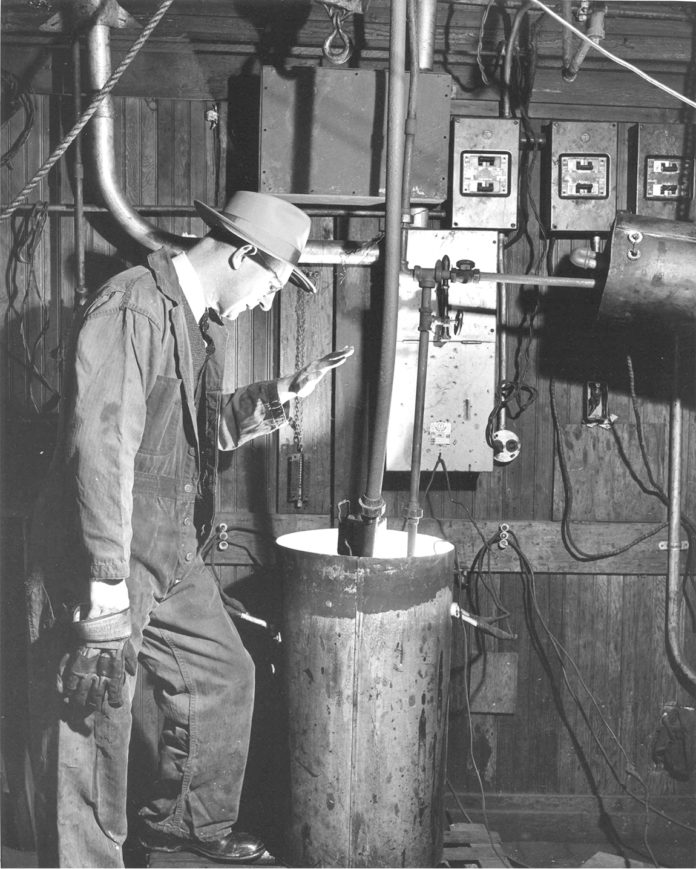Since its earliest days, Tacoma’s ports shipped boatloads of coal destined for buyers as far as Hawaii and up and down the Pacific Coast. While most King County coal shipped from Seattle, the Pierce County coal mines of Wilkeson, Carbonado, Burnett, Spiketon, and Melmont marketed their coal through Tacoma. There was a very good reason for the divide. In the early days before 1900, railroads carried almost all the coal, and Pierce County mines were served by the Northern Pacific which chose Tacoma as the western coast terminus of its transcontinental railroad. In response, Seattle interests built their own railroad, the Columbia & Puget Sound which served the mines of Newcastle, Issaquah, Black Diamond, and Franklin.
Tacoma was also a research leader into cleaner ways to burn coal. Since the 1850s, scientists and engineers have sought new ways to develop cleaner-burning heat plus alternate uses of coal. Thousands of products were developed with coal or coal by-products as components including artificial dyes, soap, aspirin, solvents, plastics, and fibers, such as rayon and nylon. On Dec. 15, 1948 when this photo was taken, E. Leslie Records was hard at work in his father’s Tacoma lab located at 990 Middle Waterway to develop smog-less coal. His father, Elmer H. Records was a native of the Pennsylvania coal fields where he began working in the mines at age nine. For 25 years, Elmer Records experimented with methods to obtain more and cleaner heat from coal. He held 40 patents on coal derivatives, oil, shale oil, and sand development processes.
The Records’ newest efforts focused on reducing coal smog through a process called “thermal-chemical carbonization and distillation’ which aimed to convert low-grade bituminous and lignite coals into high-quality, lower-pollution fuels. One experiment on a ton of coal extracted 1,400 pounds of smokeless fuel, 40 gallons of tar oil, 75 gallons of ammonium-sulphate liquid fertilizer, and 4,000 cubic feet of dry gas. At the time, plans were underway for commercial production plants in the Tacoma area to implement work carried out at the pilot plant in Wellington, Utah. Elmer Records knew of Tacoma’s history with coal and was anxious to see it as home to the first commercial plant in the Puget Sound area, saying “our new process will then have come back to its birthplace.”
This photo #D37078-3 comes courtesy of Richards Studio and is held at the Northwest Room of the Tacoma Public Library. Research was assisted by the library’s catalog of newspapers, including the Tacoma Times where an article about the birth of Elmer Records’ smokeless coal appeared in the Dec. 20, 1948 issue on page 5.







